I remember well the first flight of my son, five months old and swaddled against my chest, sleeping from wheels‑up in Bucharest to touchdown in Nice. One perfectly timed feed, a dark cabin, and boom! Smooth sailing. Since then, I’ve flown solo with him at six, twelve, and now fourteen months, plus easier trips when his dad or grandparents tagged along. Some flights felt blissful, while others featured page‑shredding tantrums and a broken nursery room in a heat‑wave delay. Those swings taught me every hard‑won lesson you’ll read here.
Most flying with toddlers guides skim the surface, repeating the same toddler flight tips without context.
Flying with Toddlers Tips
The Travel Bunny’s guide to flying with toddlers dives deeper: the best time to book, and choosing the best time to fly, lap‑infant for budget travelers vs paid seat, TSA milk rules, quiet toys that actually work, ear‑pressure fixes to calm ear pain, delay tactics, and quick jet‑lag resets. I’ll share what worked and what flopped so you can skip my missteps and keep your next round of air travel with toddlers a little calmer.
Read on and you’ll land with a calmer kid, lighter cabin bag, and maybe even a spare hand for coffee. Ready for boarding?

Flight Selection and Timing
Choosing the right flight is the first place where things can go very right or very wrong when flying with toddlers. I’ve done this alone with my son since he was five months old, and every detail matters, especially when they get a bit older. Toddlers are creatures of habit, and air travel disrupts everything they know: meals, naps, movement, noise levels. Picking the wrong flight time or the wrong kind of trip can unravel your prep before you even get to the gate.
Direct Flights Are Worth It
Direct flights with toddlers cost more, but they’re usually worth the extra euros. Avoiding a connection cuts the risk of missed flights, surprise gate changes, and reboarding a child who just calmed down. I’ve only flown within Europe so far, but I have friends who do long-haul travel with a toddler and swear by avoiding layovers. One even schedules layovers overnight just so their child can sleep in an airport hotel rather than endure back-to-back flights.
Toddler Layover Tips: If you absolutely must connect, keep at least two hours between flights. Unless you have a stroller where you have your layover (airport-provided or rented if you have time to go out of the airport), check that your stroller will be returned to you at the layover, not at your final destination.
The Best Time to Fly with Toddlers
Best time fly toddler? It depends on your child’s routine. For me, it was always easier to leave mid-morning or early afternoon. On one flight from Bucharest to Nice, I timed the nap perfectly and fed him during takeoff, and he slept through until we had to get off the plane. That flight felt like a gift.
When is the best time of day to fly with toddler also depends on whether they nap in a carrier, on your lap, or only lying flat. If your child is a deep napper and can sleep in your arms, a mid-morning flight right after a short play session is your safest bet. If sleep is hit or miss, choose a time when they’re naturally calmer, even if that means stretching your budget for a more toddler-friendly schedule.
Parent Flight Tip: Avoid super early morning departures unless your toddler is naturally an early riser. Waking them at 4 am just to drag them through security usually backfires.
How Air Travel with Toddlers Is Different
Air travel with toddlers is not just more tiring. It’s unpredictable. One trip might go smoothly with snacks and a quiet toy. The next? Screaming and wriggling for two hours straight. That’s because flying with kids between 12 and 24 months is a grey zone. They want to move, but they don’t understand limits. They resist being held, but can’t sit still on their own.
My son had his toughest flight at 13 months. He had napped at the wrong time on the way to the airport and then lost all patience on the plane. Singing into his ear calmed him only slightly. Toys failed. Toddler magazines failed. The one thing that saved me was the in-flight magazine. He flipped through the shiny pages and slowly settled.
Kids on a plane under two fly free as lap infants on most airlines, but that doesn’t make it easy. Their needs change every few months. Stay flexible, pack smart, and don’t count on any one trick to work twice.
Parent Plane Tip: Don’t rely on cabin crew to help much beyond the basics. Plan as if you’ll be handling everything on your own, even if you’re traveling with someone.
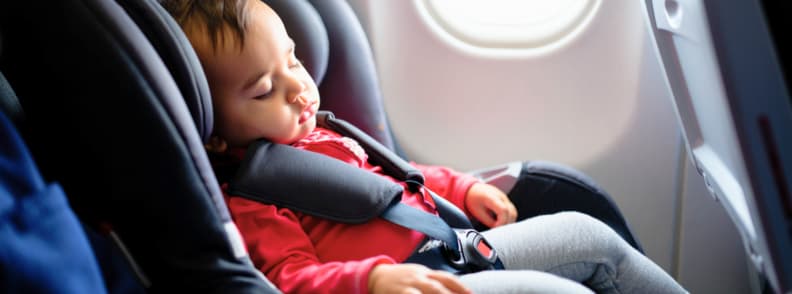
Seating and Safety Gear
When you’re flying with toddlers under two, the first decision you’ll face after booking is whether to hold your child as a lap infant or buy a separate seat. For budget reasons, I’ve always chosen the lap option, but I won’t lie. It has limits. There are flights where I’d gladly have paid extra for space, especially now that my son is older, stronger, and squirmier. Let’s walk through what actually matters when it comes to seating and child restraint systems.
Baby vs Toddler Flight Rules
Flying with a six-month-old is not the same as flying with a fourteen-month-old. I’ve done both, and the difference is huge. If you’re not sure when it gets harder, it’s around the time they want to move but don’t understand why they can’t.
Understanding baby vs toddler flight rules helps with setting expectations and planning gear. Babies can usually sleep through most of a flight, especially if you time their feeding right. You can carry them easily, breastfeed more discreetly, and settle them into sleep with movement. Some airlines even offer bassinets on long-haul flights for infants under 10 kilograms.
Toddlers are a different story. They need stimulation, snacks, and movement. They fight confinement and routines. From age two, they need their own seat, and they’ll need your help staying in it. Everything takes longer and requires more patience. But they also understand more, so your prep can go further.
Toddler Flight Tip: Don’t assume what worked for your baby will work for your toddler. Plan each flight from scratch based on their current sleep, feeding, and mobility habits.
Should You Buy a Seat or Use a Lap Infant Ticket?
Most airlines allow children under 2 to fly free or for a reduced fee as infant lap child, meaning they sit on your lap without their own seat. It’s tempting to save money here, especially on short flights. But the older your toddler, the more difficult this gets.
I’ve flown solo with my son several times using a lap seat. At 6 months, he mostly snuggled or breastfed if he wasn’t sleeping. By 14 months, he was pushing off my lap, trying to explore everything. If your toddler is nearing their second birthday, think hard about booking them their own seat, especially if the flight is over two hours.
Anyway, once your child turns two, the toddler lap infant rules expire. Airlines will require a paid seat, which means purchasing toddler flight tickets every time. If you’re close to that age cutoff, plan for it in your travel budget.
Infant Lap Child Rules: If you use a lap infant ticket, request a window seat so you can lean your child toward the side of the plane to get more support and distract them with what they can see outside. Avoid aisle seats on short flights because little hands love the tray carts and armrests. On longer flights, you’ll appreciate aisle seats if your toddler wants to get up and walk often.
What About Toddler Car Seat Airplane Rules?
If you do buy a seat, you can bring a toddler car seat airplane-approved by the FAA or EASA. It must have a visible sticker that says it’s certified for use on aircraft. Installing it correctly can be tricky in narrow rows, but it’s the safest option for kids under 2.
Does a 2 year old need a car seat on a plane? No, a car seat is not mandatory. At age two, a child must have their own seat, but they can be secured with the regular aircraft seatbelt if they’re big enough. That said, safety authorities like EASA and the FAA strongly recommend using a child restraint system because it offers a level of protection equivalent to that of adult passengers.
These seats should be installed on the window seat only, not next to the aisle or in any row linked to emergency exits. You’ll need to install it forward-facing in most cases, though some seats allow rear-facing if there’s room. Depending on the model and your aircraft, you might run into car seat width issues on airplane seating. That’s where slimline travel models or contacting the airline ahead of time can save you frustration.
How to install car seat on airplane seat: Recline the seat back slightly before tightening the car seat strap, then return the seat to upright. This helps you get a snug fit. Keep the instruction manual with you so the crew can verify the setup if needed.
Car Seat Fit Issues on Narrow Aircraft
One common issue parents face is resolving car-seat width issues on airplane seating. European budget carriers in particular tend to use narrow seats with fixed armrests. Even if your car seat is certified for aircraft use, it may not physically fit between the armrests without raising them, which isn’t always allowed.
If you’re unsure whether your seat will fit, measure it ahead of time and compare it to the seat width listed by the airline. Some companies offer specific guidance for CRS dimensions and whether belt extenders or belt shorteners are allowed.
Advice for Air Travel with Toddlers: If your car seat doesn’t fit or is rejected by crew, you’ll need to check it at the gate. Always have a backup plan ready, especially if you’re flying solo.
Toddler Airplane Seat Belt Safety Guidelines
If you’re not bringing a full CRS, ask the airline about toddler airplane seat belt safety guidelines. Some airlines offer belt-loop harnesses that attach to the adult’s seatbelt, while others rely entirely on the infant seatbelt provided onboard.
That infant belt, secured over your lap belt, must be used during taxi, takeoff, landing, and any turbulence. It’s not optional, and cabin crew are responsible for ensuring it’s attached correctly.
Toddler seat belt airplane options vary by carrier. Don’t assume you’ll be given anything extra unless you’ve confirmed it during booking.
Toddler Airplane Safety Tip: On smaller carriers, always double-check in advance if these toddler belts are available. They aren’t standard across all fleets.
CARES Harness Option
The CARES harness is a soft, belt-based restraint approved by many airlines for toddlers over 1 year and at least 10 kilograms who have their own seat. I haven’t used one myself yet, but friends flying long-haul love it.
If you’re asking how to use CARES harness on 3 year old flights, start by checking with your airline. Even if the device is certified, not all carriers allow it.
Toddler Sleep Devices and Smart Gear
Beyond the basics, there are tools that can make a difference during long or late flights. Parents often look for toddler sleep devices plane options that support better rest. These include inflatable footrests, compact leg hammocks, or seat extenders designed to turn the toddler’s seat into a sleep surface.
Many parents opt for an inflatable footrest toddler pillow to help their child lie flat while napping. But are inflatable footrests allowed on airplanes for toddlers? That depends entirely on your airline. Some carriers permit them if they don’t block aisle access or emergency exits. Others ban them outright. Always check the airline’s policy before you fly, even if you’ve used the same item before on a different route or with a different crew.
If you’re planning to use a footrest, print the product info and airline approval page (if available) to show crew if questioned. And be ready to stow it quickly if asked.
A toddler car seat trolley is a smart buy if you’re traveling with both a car seat and a toddler. You can strap your child into the seat and roll them through the airport instead of carrying everything separately.
Boarding Tips and Airline Policies
Some airlines include early family boarding, others make it optional or paid. Check their family boarding policies when booking.
Using toddler boarding early windows can help you settle in and install a car seat without a rush. But if your child hates sitting still, boarding last can save your sanity. I prefer to board towards the end, unless I need to take a bus between the gate and the plane.
Toddler Boarding Tips: Even with a separate seat, bring snacks, quiet toys, and water handy in your bag. No seat setup guarantees a smooth flight.
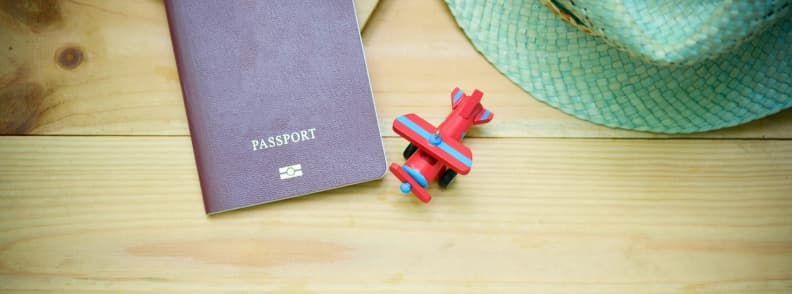
Documentation & Legal Requirements
One of the trickiest parts of flying with toddlers, especially for first-time parents, is understanding what documents you actually need. The rules change depending on your destination, who you’re flying with, and even which country issued your child’s documents. I’ve flown solo with my toddler within the EU and always triple-check entry requirements before we go. You do not want to be standing at check-in, toddler in arms, being told you’re missing a form or ID.
What Documents Needed Flying with Toddler
At a minimum, airlines will ask for some form of ID that matches your child’s name to their ticket. For domestic flights within your home country, this might just be a birth certificate or health card. But for anything international, even within Schengen, you’ll need proper child travel documents. That’s where it gets country-specific.
In some EU countries like France, children of any age can be issued a national ID card. In others, like Romania, they don’t get an ID until 14. Our child has a double nationality, and we only use French documents for him because a single parent traveling with a Romanian minor would require more paperwork than a single parent traveling with a French minor.
Back when I was little, children were added to their parents’ passports, a practice long gone, but one that some of us still remember when lining up at border control.
Some countries require both parents to be present (or provide written consent) when applying for a child’s passport. Plan ahead, especially during school holidays.
Toddler Passport Requirements
For cross-border travel, your child must have a passport. Most European countries issue toddler passports valid for up to 5 years. Processing time can vary depending on the season and location, so don’t leave this for the last minute.
Toddler passport requirements include a photo that’s recent, against a plain background, and shows their face clearly. No need for them to look at the camera or close their mouth, but the image has to be sharp and passport-approved.
Toddler Passport Tip: Go to a studio that’s familiar with baby passport photos. But even when done by a pro, the result will still make us giggle for years to come.
Flying Without Both Parents? Rules Vary by Country
If only one parent or legal guardian is flying with the child, toddler consent letter requirements depend on your country of residence and destination.
There are countries like France, which require no consent letter if the child is flying with at least one parent. A travel authorisation form (Autorisation de sortie du territoire) is only required when a French minor travels without either parent.
But there are also countries like Romania, where even the other parent must provide official, notarised consent if they’re not the one accompanying the child abroad. This applies whether the child is traveling with a parent, grandparent, or another adult. The document must be legally certified, and the Romanian border police will refuse departure without it.
Always carry the consent letter in print, along with a copy of the absent parent’s ID. Even if the airline doesn’t ask, border authorities might.
Sample Consent Letter for Child Traveling Internationally with One Parent
There’s no universal format, but your sample consent letter for child traveling internationally with one parent should look something like this:
I, [Parent Full Name], authorize [Other Parent Full Name] to travel internationally with our child [Child Full Name, DOB], from [Start Date] to [End Date], visiting [Destinations]. I can be contacted at [Phone Number] or [Email].
Sign and date it. In some countries, it must be notarised. In others, a basic letter with ID copies may be sufficient.
Toddler ID and Paperwork for Domestic Flights
For flights within your home country, toddler ID domestic flight rules are more relaxed. Some airlines don’t ask for anything if the child is under two and traveling with a parent. Others want proof of age to verify a lap infant fare.
You can carry a laminated copy of your child’s birth certificate just in case. It’s small, lightweight, and can save time at check-in.
Do toddlers need passport for domestic flight? In some countries, no. But you may still need ID for hotel stays, insurance claims, or medical visits abroad. Bring a copy anyway.
International Flight Requirements for Toddlers During COVID
International flight requirements for toddlers during COVID have mostly eased, but some countries and airlines still require locator forms, mask policies (for older kids), or health declarations. Always check both the airline and the government travel site before you fly.
Can Grandparents Take Toddler on Plane Without Parents?
Yes, but the paperwork matters. If your child is flying with a grandparent or any other adult who isn’t a legal guardian, they’ll need a toddler consent letter signed by both parents. This is particularly strict in Romania, where a notarised declaration from both parents is required, even for close family members. In France and many other EU countries, a basic authorisation form and ID copies usually suffice.
If you’re unsure, contact the border police or airline at least a week before travel. Rules are often enforced by the departure country officials, not the airline.
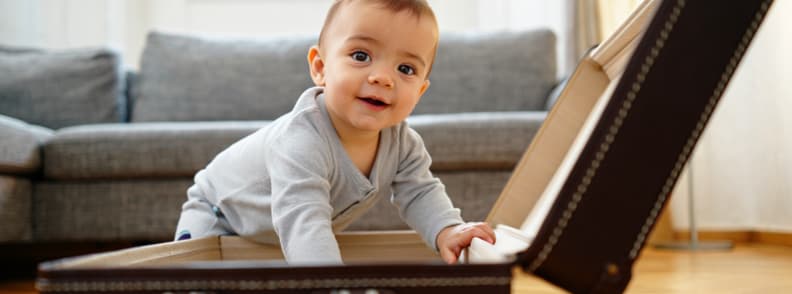
Packing and Carry-On Essentials
Your toddler’s mood in the air starts long before takeoff. It begins with what you pack. I’ve now flown with my son at five different ages and learned the hard way that one missing item can turn a decent flight into a disaster. So, whether you’re flying with toddlers for the first time or trying to optimise your system, your carry-on needs to cover sleep, snacks, play, comfort, and clean-up, all while staying under your airline’s weight limit.
What to Pack in Toddler Carry On Bag
When you’re figuring out what to pack in toddler carry on bag situations, break it down into five categories: food, play, hygiene, clothes, and sleep.
Here’s what I pack every time:
- Two full sets of clothes (including socks)
- A small packet of wet wipes and several nappies
- A changing pad and a huuuge trash bag to use on the surface before I put the pad
- Zip bag for soiled clothes
- Bib and spoon (and back-up spoon)
- Baby food adapted for his age
- Pouches with fruit puree and yogurt
- Water bottle with leak-proof lid
- A toy he likes but hasn’t seen around the house for some time (our favorites are fine motor toys for flight like the crab)
- Some books or toddler magazines for quiet activities.
Toddler Packing Tip: Pack each category into its own small zip bag so you’re not rummaging while juggling a squirming toddler.
Add an Activity Bag for Toddler In-Flight Entertainment
Alongside your essentials, pack a small activity bag toddler flight kit. This can be its own pouch inside your main carry-on or a lightweight zip-up folder you pull out once seated. I suggest:
- A small toy (ideally fine-motor based, like the crab)
- A quiet book (like the baby elephant one we love)
- Crayons and a mini notepad or reusable sticker book
- One surprise item: a toy he hasn’t seen before.
It doesn’t need to be big. The goal is to offer variety in small doses throughout the flight.
I always prioritise quiet play over noisy gadgets out of respect for other travellers. Books with flaps, magnetic puzzles, and painter’s tape games all work well mid-air. While I don’t use a portable sound machine toddler plane during the flight because I’d rather avoid adding background noise for nearby passengers, we do travel with our Maiasaura story box. It’s compact, USB-chargeable, and a lifesaver once we arrive.
Don’t show your toddler everything at once. Rotate one item at a time to keep them curious and engaged longer.
Toddler Carry On Bag Musts
Your toddler carry on bag should be light enough for you to carry hands-free if needed. I’ve used a backpack so I can manage my child in the baby carrier while boarding. If you’re also managing a stroller or gate-checked car seat, weight really matters.
Toddler Carry-on Bag Advice: If you check a bag, put one spare outfit for you in the carry-on too. Spilled milk or a blowout doesn’t care if you’re flying low-cost…
Toddler Flight Checklist for Peace of Mind
Write or print a toddler flight checklist in advance so you’re not scrambling the night before. Here’s what mine includes:
- Passport/ID and electronic boarding pass
- Spare clothes x2
- Snacks + water
- Small toys
- Baby wipes
- Hand sanitiser
- Tissues
- Nappies
- Changing mat
I keep mine saved as a Google Keep template on my phone and tick it off the night before departure.
Diaper Changes on a Plane
Toddler diaper change tips on airplane? Honestly, it depends on the plane. Some lavatories have proper changing tables; others feel like a yoga challenge. Do a pre-boarding check of where the changing station is. Always carry a compact kit: 1 nappy, wipes, a disposable mat, a resealable bag for trash, and a change of clothes. The last thing you need is to realise mid-diaper change that the clothes are stowed in the luggage
Parent Tip: Change your toddler’s nappy just before boarding, even if it seems early. It buys you time and keeps early fussing to a minimum.
What Size Diaper Bag Counts as Personal Item on Plane
Most airlines let you bring a diaper bag in addition to your hand luggage. But what size diaper bag counts as personal item on plane varies. On low-cost European carriers, your personal item often needs to fit under the seat in front of you, at roughly 40 x 20 x 25 cm. Some full-service airlines are more generous.
I use a soft-sided backpack so it compresses when needed. Avoid rigid bags that take up unnecessary space and invite gate drama.
Checklist for Flying with Toddler and Newborn
If you’re traveling with two under two, you’ll need a different plan. A checklist for flying with toddler and newborn should include items for both kids, but keep them separate to avoid confusion. Use color-coded packing cubes or separate side pockets to divide toddler vs. baby essentials.
Request help from crew when boarding or deboarding. Most will offer a hand if you’re clearly flying solo with two young kids, even if they can’t hold the baby.
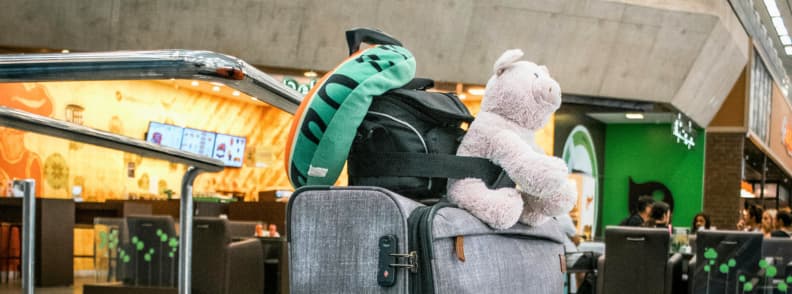
Airport Logistics and Security Screening
The airport is where most of us parents feel the stress first. Between queues, confusing signage, and unpredictable toddler moods, the logistics can be overwhelming. I’ve had everything from smooth fast-track security to unexpected scanner shutdowns right as I reached the belt at Nice Airport. Here’s how to get through the process with minimal drama when flying with toddlers.
Airport Security with Toddlers
Airport security with toddlers often looks chaotic, but it doesn’t have to be. You’ll usually be allowed to carry your child through the metal detector while your items go through the scanner. Strollers, carriers, and even soft toys are placed separately on the belt. I always prep a separate tray for liquids and food items and another for electronics to avoid delays.
In some airports, you’ll find dedicated family lanes. Use them if they’re open. They move slower, but allow for more flexibility and fewer irritated glances if your child needs a second to adjust.
Toddler Airport Security Tip: If your child is walking, they may be asked to go through the detector on their own. Keep your hands visible and crouch to encourage them forward.
TSA Toddler Rules and EU Screening Guidelines
Even if you’re flying from Europe, it helps to understand TSA toddler rules, since many countries follow similar procedures. Children under 12 can leave their shoes on. You can bring breast milk, formula, or baby food through security in reasonable quantities (more than 100 ml is allowed if it’s declared). But keep in mind that TSA rules for toddler food and drinks are sometimes interpreted differently by agents.
In the EU, similar allowances apply. However, you don’t need to declare that your recipients are over 100 ml. I pass with food for two meals (just in case there are flight delays) and two 500 ml water bottles. I always separate our food pouches and water bottles into transparent bags and have them ready for manual inspection. In my case, they never had to open recipients despite testing everything.
TSA Toddler Rules: If you’re unsure, print out the relevant section from your airline’s website or your country’s border authority. It can be helpful when agents are unsure or during busy travel seasons.
Can You Bring Milk for Toddler on Plane?
Yes, you can. Can you bring milk for toddler on plane is one of the most common questions I see, and the answer is yes, as long as it’s clearly for your child. I breastfeed, but when he was younger, I also travelled with formula as a backup. Some formula companies now offer single-dose pouches to add in water, or you can get special recipients to prepare with the exact quantity your child drinks before you leave home.
Of course, you can also bring pumped breastmilk for your toddler through security. It may just be slightly more difficult to keep at a proper temperature. And add your milk bags/recipients in a transparent resealable bag during the security check, to keep the germs at bay as much as possible.
Don’t forget to plan ahead if your toddler doesn’t drink milk at room temperature. Flight attendants can warm milk if needed, but there’s no guarantee, so don’t rely on it.
How to warm milk on a plane: Ask for hot water in a cup to warm your milk bottle gently. It’s safer than asking them to microwave anything or overheat it.
Is Baby Food Exempt from Liquid Rules TSA?
Yes. Is baby food exempt from liquid rules TSA is another common question, and the answer is, again, yes, but within reason. The TSA and EU equivalents allow you to carry jars or pouches of baby food, as well as prepared meals for toddlers. You should declare them at security, and they may be swabbed. I always pack our food in a clear zip bag at the top of the carry-on so I’m not fishing around while my toddler starts squirming.
If your toddler snacks throughout the flight, portion food into smaller containers before the airport. That way, you’re not opening full jars or pouches mid-flight.
How Early to Arrive at Airport with Toddler
How early to arrive at airport with toddler depends on the airport’s size and your destination. I aim for two hours for domestic flights and two and a half hours for international flights, especially if traveling solo. Things like broken scanners, long queues, or slow document checks add up fast when you’re managing a small child.
During our last solo flight, we had trouble getting the boarding tag for the stroller and then the security staff took a break after having scanned only half of my luggage. It reminded me that buffer time isn’t a luxury. It’s essential.
But too much of a buffer can also lead to an overexcited toddler, so balance is key.
Toddler Parent Advice: Arrive early but don’t rush into security until you’ve done everything you need: diaper change, snack, bathroom stop. Once you’re past security, your options shrink.
Preparing Toddler for First Flight Video Resources
If it’s your child’s first time, prep matters. Preparing toddler for first flight video resources can help them understand what to expect. There are animated walk-throughs or simple airport cartoons on YouTube really helpful. Or you can use AI to generate something with their cuddly toy as a protagonist. Watching these the night before or on the way to the airport can make your child more curious and less anxious the first time you fly.
You can also use your own photos from your previous trips to show them the plane window, the tray table, and the seatbelt, and to talk them through what’s coming.
Narrate each step aloud on the day of travel. “Now we’re putting our bags on the belt” or “Let’s walk through the beep machine”. Toddlers like knowing what’s next.
Tips for Breastfeeding During Take‑off and Landing
If you’re nursing, tips for breastfeeding during take-off and landing come down to timing and access. Feeding during ascent and descent helps reduce ear pressure and calms your child in an unfamiliar setting.
I’ve breastfed during takeoff until 13 months, but the last time, my son was too distracted by lights or sounds to latch. Having a cover or quiet corner helps, but not all planes or airports are equal. There are also special t-shirts or blouses that provide easy access if you don’t want to be half-naked next to a stranger. But your child, like mine, might find it more interesting than feeding to play peek-a-boo with the neighbor across the aisle using what you’re wearing…
Airport Breastfeeding Tip: If you’re looking for a place without distractions to breastfeed your toddler before boarding, you can’t always count on nursery rooms. Scout for a quiet gate area near a wall, and bring a large scarf for privacy if needed.
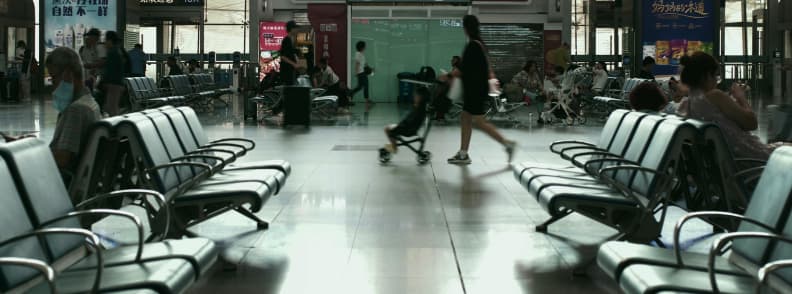
Strollers and Car Seats at the Airport
If you’re flying with toddlers, a good stroller strategy can make or break your airport experience. I’ve tried navigating terminals with and without one, and I’ll never go stroller-free again. At least not unless I’m baby-wearing and it’s a very short trip. Airports aren’t built for small children, and having wheels helps you move faster, store gear, and give your toddler a familiar place to rest.
What You Can Bring as a Stroller on Airplane
Yes, you can take your stroller on airplane trips, but how and where depends on your airline. Most allow you to bring one stroller per child, and it usually travels for free. You’ll either check it at the counter or at the gate. Gate-checking lets you use it right up to boarding and, in some places, again immediately after landing. In my case, I’ve always picked it up with the oversized luggage after landing (or with the regular luggage, but that’s another story).
From other parents’ experiences, I’ve learned that not all strollers are allowed past security. Each airline has its own rules, especially low-cost carriers. To avoid problems, check their size and weight limits before the day of travel.
Gate Check Stroller Tips: Choose a lightweight travel stroller for toddlers that folds in one piece and fits through scanners. Airport staff are more helpful when you’re not holding up the line with complicated gear.
Gate Check Stroller Process: Step by Step
Here’s how to gate check stroller without hassle:
- At the check-in desk, ask the staff to tag your stroller. I bring a bag to keep it clean, and they tag the bag. (Some airlines tag directly at the gate, though.)
- Fold it just before the aircraft door. Stash it in the bag before handing over, if you’re one.
- Hand it on the jet bridge or at the bottom of the stairs, depending on the boarding setup.
- On landing, collect it either at the aircraft door or from oversized baggage. This varies by airport.
Gate Check Stroller Advice: Pack a large plastic bag or custom gate-check bag to protect the stroller from dirt, grease, and rough handling.
How to Gate Check Stroller Like a Pro
Knowing how to gate check stroller like a pro means preparing for both options: immediate return at the aircraft door or delayed return at baggage claim. This depends on the airport staff. Always confirm with the gate agent exactly where to collect your stroller after landing when it’s your first time at that airport after flying with a toddler.
Some airports return gate-checked items at the carousel, which is a nightmare if you’re alone with a tired toddler and no spare hands.
Toddler Parent Advice: Take a baby carrier just in case. If your stroller disappears into the hold, you’ll still have a way to move through the terminal.
What to Check in the Toddler Stroller Policy Airline
Every airline has its own toddler stroller policy airline. Some restrict umbrella strollers only, while others allow full-size strollers as long as they’re under a certain weight. Many budget carriers won’t let you bring anything larger than cabin size without checking it in at the counter.
Before flying, check:
- Max dimensions allowed for cabin strollers
- Whether folding in one piece is required
- If you need to pre-register your stroller
- Gate-check versus check-in only rules.
Gate‑checked Stroller Tips: Take a screenshot of the policy in case staff at the gate challenge you on arrival.
Are Stroller Bags Worth It for Air Travel?
In my experience, yes. Are stroller bags worth it for air travel comes down to how much you value your gear or just want to avoid sitting your child in filth after the flight. I’ve seen strollers returned soaking wet after rainy tarmac handling and with scuffed wheels from loading belts. Also, strollers returned so dirty you wouldn’t want to touch them with a five-foot pole, let alone put your child in them.
A basic stroller bag keeps it dry, protected, and often has space to tuck in extras like the rain cover or a soft blanket. I use one every time now.
Air Travel Stroller Bag Advice: Choose a bag with your name, contact information, and flight details clearly labelled. Ground crew are more likely to deliver it directly if it’s easily identifiable.
Car Seat Travel Carts for Airports
If you’re flying with a car seat, car seat travel carts for airports are game changers. These carts let you strap the car seat onto a wheeled frame, and some allow you to roll your child in it like a mini stroller.
They’re especially useful if you plan to use the car seat on board or at your destination. Carrying a seat across a terminal is a fast way to end up with sore shoulders before the flight even begins.
Some car seat travel carts for airports collapse small enough to store in the overhead bin. Confirm with your airline if you’re allowed to bring it on board.
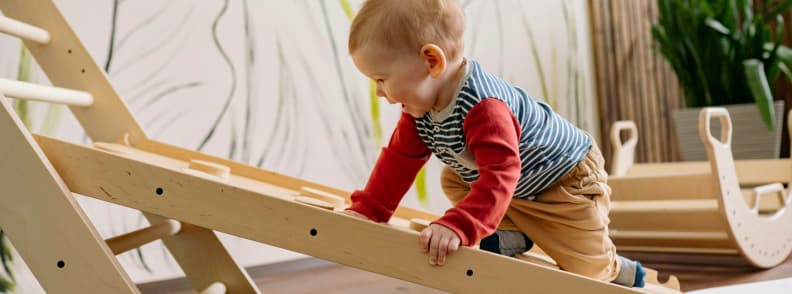
Airport Amenities and Play Areas
Once you’re past security, the airport experience doesn’t magically get easier. You still need to manage meals, naps, movement, and possibly a long wait. Knowing where to go and what to look for can take a lot of pressure off. I’ve spent hours pacing terminal floors with my child strapped to me, and I can tell you this: flying with toddlers is always easier when you find the right spaces to pause and breathe.
Toddler Airport Play Areas
Many larger airports now include toddler airport play areas. They’re small enclosed spaces with padded flooring, activity panels, or soft toys. Not all of them are well-maintained, and some aren’t clearly signposted, but they can make a big difference. Even a ten-minute session in one of these spaces helps toddlers burn energy before boarding.
Some of the best toddler airport play areas can be found in Scandinavian airports. They tend to prioritise families more than others. I’ve also found that airports serving long-haul routes are more likely to have designated kid zones. Smaller regional terminals? Not so much.
If you don’t see signs for a play zone, ask staff at the information desk. Some are hidden behind security or tucked near family gates.
Toddler-Friendly Airports with Play Areas USA and Europe
If you’re planning ahead, here are some toddler‑friendly airports with play areas USA and in Europe worth noting:
- Zurich (ZRH) offers dedicated family services, including changing tables, baby care products, rooms for sleeping and breastfeeding, and a kitchenette equipped with a microwave, cutlery, and utensils.
- Munich (MUC) features multiple children’s play areas located in Terminal 1 (Modules B and C) and Terminal 2 (Gates G, H, K, and L).
- Amsterdam Schiphol (AMS) has a Kids Playground on the first floor of Lounge 2, where children can climb and play on a real plane structure.
- Doha (DOH) offers several activity nodes equipped with televisions, internet browsing, toys, mini-rides, and climbing frames. There are five such nodes located throughout the passenger terminal.
- Dubai (DXB) features the DXB Family Zone in Concourse B, providing a play area for children to enjoy before flights.
- San Francisco (SFO) has some great themed Kids’ Spots, including the Butterfly Wall near Gate D15 in Terminal 2, offering interactive play areas for children.
- Chicago O’Hare (ORD) provides a Family Lounge located in Terminal 2 just beyond security, offering a designated space for kids to play with colorful seating.
- Dallas-Fort Worth (DFW) features a McDonald’s Play Area at Terminal D – D8, designed for young passengers to expend energy before flights.
These areas are most useful if your flight is delayed. Head there early before the crowds take over.
Easy Airport Games for Toddlers While Waiting
When there’s no dedicated space, you’ll need to improvise. I began packing painter’s tape in our activity kit, it’s a go-to for easy airport games for toddlers while waiting. You can make roads on the floor for toy cars, mark hop spots, or play shape-matching games.
Besides using what you packed from home to keep your toddler entertained, here are some other standby activities:
- Stroller peekaboo with a scarf
- Snack-based sorting
- Counting wheels on rolling luggage
- Opening and closing the same zip pouch repeatedly.
You don’t need anything fancy. It’s about offering focus and interaction in short bursts.
Let your toddler walk laps around a quiet gate while holding your hand. Movement now makes the seated time on board much easier.
Family Restrooms and Nursing Rooms Airport Locator Tips
The quality of family restrooms airport spaces varies wildly. Some airports offer large, clean family washrooms with built-in changing tables and feeding chairs. Others, like the one on Bucharest’s Otopeni Airport, are so poor you end up looking for a quiet corner instead.
If you need a space to breastfeed or settle a toddler, using a nursing rooms airport locator app can help. But you might find places not listed on a lactation room locator app, so I recommend asking directly at the gate or checking the nearest lounge or first aid station. Staff can sometimes let you into less-used areas if the official nursing room is full or closed.
Travel Advice from a Breastfeeding Mom: Bring a scarf or muslin cloth to create a bit of privacy anywhere. My backup plan is to find a quiet gate with a view of the tarmac. It calms my son instantly.
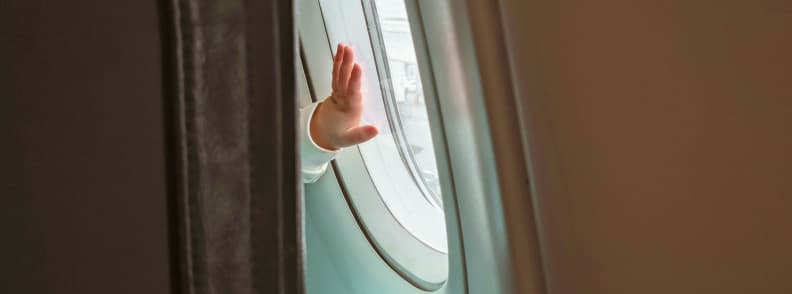
In-Flight Comfort and Health
Your job doesn’t end once you board. In fact, most of the hard work happens at cruising altitude. Managing your toddler’s comfort, avoiding illness, and preventing screaming fits at 30,000 feet is possible if you’re prepared. From toddler ear pain flight to hydration, here’s how I’ve handled it as a parent who’s flown solo and with help.
How to Prevent Toddler Ear Pain During Take-Off and Landing
The pressure changes during ascent and descent are tough for little ears. My go-to move is feeding during take-off and again during the final descent. It doesn’t always work (sometimes he’s too distracted to latch or asleep), but it usually helps.
There are several ways to handle how to prevent toddler ear pain during take‑off and landing:
- Breastfeeding or bottle-feeding
- Sippy cup with water
- Pacifier for those who have accepted a pacifier (my son didn’t)
- Teething toy for jaw movement
- Yawning games (“Let’s open our mouths together!”).
Pack a few chewy snacks like breadsticks or banana slices if your toddler won’t take a bottle or breast during pressure shifts.
Strategies for Avoiding Toddler Ear-Pressure Pain Naturally
If you’re like me and you prefer not to use medication, there are strategies for avoiding toddler ear-pressure pain naturally. You can carry a warm compress for airplane ear pain in a zip bag (ask the crew for warm water) and gently press it near the ear for comfort. You can also massage the jawline just before landing to help open the Eustachian tubes. It’s surprisingly effective, especially if your toddler is too worked up to eat or drink.
A security agent has also told me to softly massage the spots right in front of the ears. I’ve tried it when he was sleeping, so I don’t really know if it works or not. He slept through all the landings so far.
Encourage swallowing. Even small sips of water or mimicking a dramatic gulp helps if your toddler will play along.
What You Should Know About Toddler Motion Sickness Plane
Motion sickness doesn’t always show up on the first flight. But once it does, it’s hard to forget. It’s best not to get caught off guard with no backup clothes or a sick bag.
Toddler motion sickness plane signs include:
- Pale complexion
- Drooling or sudden yawning
- Fussiness without explanation
- Vomiting (often sudden).
Ask for an extra sick bag when you board. Some airlines only stock one per seat.
Toddler Motion Sickness Remedies for Flying
There are a few toddler motion sickness remedies for flying worth packing, depending on your child’s age and what your paediatrician recommends:
- Electrolyte drinks (in toddler-safe packaging)
- Ginger-based biscuits (if allowed)
- Anti-nausea wristbands
- Approved medication like dimenhydrinate for older toddlers (with doctor’s approval).
Seat your toddler over the wing, where turbulence feels weaker. Don’t use rear-facing seats unless necessary. Don’t book emergency row seats or those immediately behind them, because you will get moved for security reasons.
Toddler Nausea Remedies
If your child gets sick mid-flight, toddler nausea remedies are mostly about comfort and containment. Cool your toddler down with a wet wipe, change clothes quickly, and keep their head upright. If your toddler will nibble on something after vomiting, dry crackers or small bites of apple work well.
A roll of paper towels and one extra outfit (for both of you) can be a flight-saver.
Toddler Hydration Flight Musts
Airplane cabins are dry, and kids dehydrate fast. Toddler hydration flight plans should start before you board. I offer water during check-in, again before security, and regularly on the plane. Use a cup or bottle that your child already knows. New bottles or ones that spill too quickly often cause resistance.
If you offer any juices to your child, I recommend you skip them on short flights. They may worsen upset stomachs or sugar crashes.
Is Benadryl Safe for Toddlers on Plane?
I get asked this often: is Benadryl safe for toddlers on plane? Technically, it can be, but only if recommended by your doctor. Never try Benadryl for the first time during a flight. Some kids get drowsy. Others get hyper. That second group? You don’t want to find out mid-air.
I’ve never used sedatives on flights and wouldn’t unless medically necessary. There are gentler options for calming your child (like routine, comfort items, and movement breaks) that are safer and more predictable.
If you’re considering Benadryl, talk to your paediatrician first. Also, do a full test run at home days before flying. Monitor for side effects.
Should You Sedate a Toddler for a Long Flight?
In most cases, no. Should you sedate a toddler for a long flight is a question best answered in consultation with your paediatrician. Sedation isn’t a substitute for preparation. If you expect turbulence or sleep disruption, focus on managing your toddler’s schedule before departure and keeping their environment consistent.
For long-haul, recreate bedtime routines with pyjamas, a blanket, and a familiar toy. It works better than any pill.
Toddler Allergies Travel Plans
For kids with sensitivities, toddler allergies travel plans need to include medications, emergency contact info, and safe snacks. Label your carry-on clearly and carry antihistamines or epinephrine if prescribed. If you’re flying internationally, check food labels in advance or pack your own meals.
Let cabin crew know about any serious allergies before takeoff. They can often block serving peanuts in your row or allow early boarding for cleaning.
Toddler Headphone Airplane Use
We haven’t used screens yet, but many parents swear by tablets for flights. If you do go that route, toddler headphone airplane options should be volume-limited and soft-cushioned. Look for models made for toddlers, with adjustable bands and decibel caps under 85 dB.
Download media in advance and test the headphones at home. Airport Wi-Fi is too slow to rely on streaming.
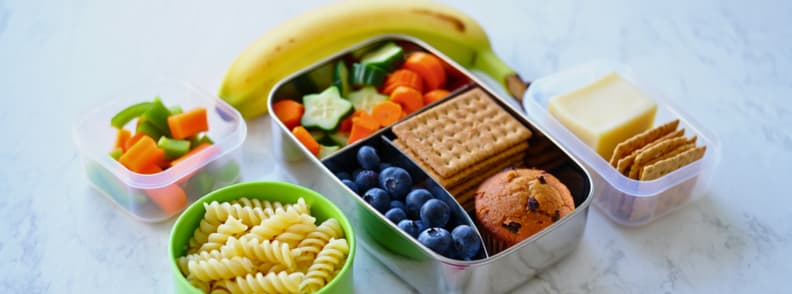
Snack and Meal Strategies
Toddlers and hunger are not a good mix at any altitude. Managing snacks and meals in flight can help avoid meltdowns, keep your child hydrated, and even serve as a distraction. I never board a plane without a dedicated food pouch in our carry-on. It doesn’t matter if we’re flying short-haul or just two hours across Europe: food is as essential as the passport when flying with toddlers.
Airplane Snacks Toddler Can Actually Eat
Not all snacks are toddler-friendly mid-air. Avoid crumb bombs, chocolate smears, and anything too smelly. The best airplane snacks toddler options are ones that can be eaten slowly, with little mess, and no refrigeration.
My go-to list:
- Rice cakes
- Cut fruit (mango slices or banana in peel)
- Cheese cubes
- Dry cereal
- Wholemeal crackers
- Oat bars (cut into small bites)
- Veggie puffs or chickpea curls.
Avoid snacks that require a spoon. If your toddler insists on self-feeding, go for finger food only. Just clean his hands before eating.
Best Snacks to Bring for Toddlers on Plane
When planning the best snacks to bring for toddlers on plane, think about how long they last at room temperature and how they hold up if squished. I pack ours in small silicone boxes or compostable paper bags. I always try to include a “novelty snack” that my son doesn’t get every day. That can buy you a few peaceful moments.
Try not to introduce completely new foods. Use snacks your toddler already eats at home so you’re not guessing about digestion at 30,000 feet.
Hunger Toddler Flight Survival
You can’t always count on airline food. Some budget carriers offer nothing at all, and even full-service flights may serve meals too late for toddler routines. Or their children’s menu might not be toddler-friendly and actually pose the risk of choking. Having a plan for hunger toddler flight emergencies is key. I do my best to respect his regular meal times, the routine calms him.
Non-Messy Snacks for Plane Travel
Non-messy snacks for plane travel are a lifesaver when you’re dealing with tight tray tables and a restless toddler. Stick to foods that don’t flake, melt, or smear.
Examples:
- Veggie sticks (adapted to how much they can chew)
- Cheese
- Mini bagels
- Fruit leather (unsweetened)
- Banana in peel.
Line the seat pocket with a small bag or container to keep snack wrappers tidy and avoid crumbs everywhere.
Baby Food on Airplane Rules
If your toddler still eats purées or pre-packed jars, knowing the baby food on airplane rules helps prevent surprises at security. In most countries, baby food is exempt from the 100 ml rule if it’s declared as necessary for the child. This includes purée pouches, jars, and even reheatable meals. Some security agents may ask to swab the containers.
Pack jars in a transparent bag and place them on the belt separately. Don’t hide them! They’re allowed, and it’s better to show you’ve followed the rules.

Entertainment and Activities
When snacks run out and the window view gets boring, you’ll need a new plan. A good activity setup can stretch attention spans, calm nerves, and make the hours in the air pass more easily. I lean toward low-tech options when flying with toddlers, especially on short flights. You don’t need a screen to keep your toddler happy, just a bit of variety and some clever packing.
Toddler In-Flight Entertainment that Works
You don’t need a suitcase full of toys. The best toddler in-flight entertainment options are compact, quiet, and offer some kind of interactive element. I always aim for a mix of sensory and fine-motor activities. What worked for us:
- A soft cloth book with flaps
- Fine motor toys for flight, such as the crab
- Reusable sticker pads
- Mini colouring set
- One surprise toy he hasn’t seen before.
Introduce new toys slowly (one every 30-40 minutes) to maintain interest throughout the flight.
Airplane Toys Toddler Will Actually Use
Not all travel toys live up to the hype. The best airplane toys toddler age 1 to 3 will use are ones that don’t rely on noise, screens, or lots of parts. I avoid anything that rolls, bounces, or lights up. Instead, we pack:
- Lacing cards
- Magnetic puzzles
- Felt boards
- Quiet poppers
- Painter’s tape (more on that below)
Test new toys for short periods of time at home first. If your toddler shows zero interest, don’t take it.
Painter’s Tape Toddler Airplane Game
One of the simplest, cheapest tricks in my carry-on is a roll of painter’s tape. I use it for everything from toy rescue missions to creative play. One go-to is the painter’s tape toddler airplane game: make shapes or roads on the tray table, hide tiny objects under strips, or create a pretend track for toy cars or animals.
It sticks lightly, doesn’t damage surfaces, and peels off without residue. Best of all, it turns a tray table into a new surface every 15 minutes.
Pre-cut small strips and stick them on a plastic card or wax paper sheet before your flight. That way, you’re not fumbling with a roll in mid-air turbulence.
Activities for Toddlers on Long Flights
On longer flights, planning activities for toddlers on long flights becomes essential. Even a three-hour flight can feel endless without the right setup. I bring a pouch just for activities and rotate toys throughout the trip. Pack for movement breaks too, if your toddler is able to stand and walk a bit during the flight, even just to the toilet and back, it helps burn energy.
Keep a toy attached to a pacifier clip or silicone strap so it doesn’t fall under the seat.
Quiet Toys Airplane-Friendly
I always aim to pack quiet toys airplane style: nothing that beeps, rattles, or sings. We travel often, and I believe in teaching consideration for others early. It’s also better for overstimulated kids to have calm options.
My list includes: silicone pop tubes, finger puppets, soft dolls, and felt shapes. When he grows a bit more, I will add puzzle books.
Put a few toys in a zip pouch with a clear front. Let your toddler pick which one to open next. It adds to the novelty.
Quiet Toys That Won’t Roll Off Airplane Tray Table
It doesn’t take much for something to vanish under the seat in front. That’s why I look for quiet toys that won’t roll off airplane tray table spaces. Anything weighted, textured, or flat works well. Avoid marbles, balls, and stacking toys with rounded bases.
Top choices:
- Water drawing boards
- Velcro fabric activities
- Stiff card games (like matching pairs)
- Wooden threading blocks
- Spinners with suction cups.
Use painter’s tape to stick toys lightly to the tray or seatback. It peels off cleanly and keeps things in place.
How to Entertain a 2 Year Old on a Plane Without Screen Time
Parents often ask how to entertain a 2 year old on a plane without screen time. My answer: keep your expectations low and your options varied. This age group needs novelty, physical movement, and connection. You’ll spend a lot of time narrating, playing simple games, or just talking about what’s outside the window.
Try:
- Window pointing and cloud spotting
- Colour guessing games
- Snack sorting challenges
- Sensory touch-and-name (textures, zips, buckles).
Play with your child in five-minute bursts, then give them space to explore on their own. Overengaging can be just as tiring as ignoring them.
Toddler Tablet Apps Flight-Friendly
If you do use a screen, make it count. Download a few toddler tablet apps flight tested for travel, before you leave. Use flight-safe headphones and switch to airplane mode once you board. I recommend apps that don’t need Wi-Fi and aren’t overloaded with ads.
Top app types:
- Simple puzzles
- Colouring
- Touch-and-listen animal sounds
- Sorting and matching games.
Limit screen use to the last third of the flight if you can. It’s your backup tool when all else fails.
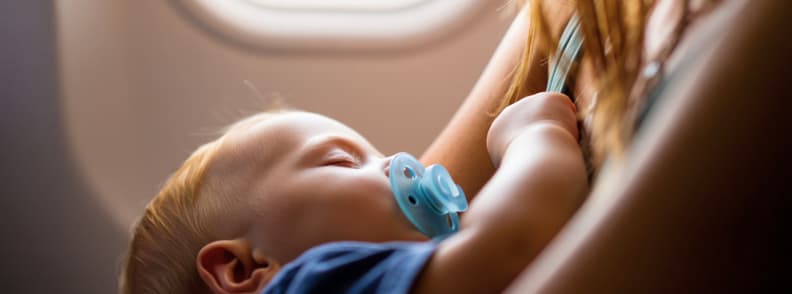
Sleep and Nap Time Solutions
Sleep is the holy grail when flying with toddlers. If your child can nap even once during a flight, everything feels easier: fewer tantrums, less stimulation, and a bit of peace for you, too. But getting a toddler to sleep on a plane takes strategy, not luck. I’ve had one perfect flight where my son slept from take-off to landing, and others where he fought sleep until we hit the tarmac. Here’s what has helped us.
Toddler Sleep Plane Basics
Toddler sleep plane success depends on timing, routine, and environment. I try to book flights that overlap with my son’s usual nap time or bedtime, depending on the route. Once we’re seated, I go into our usual sleep cues: dimming lights (if possible), soft toy in hand, maybe a feed before he starts fussing.
Don’t expect miracles. Even a 30-minute nap can reset their mood and energy level.
Best Travel Pillows for Toddlers on Airplanes
When you’re looking for the best travel pillows for toddlers on airplanes, go for soft, compact models that don’t force your child’s head forward. Some parents love inflatable footrests that turn a seat into a mini bed, but not all airlines allow them. Instead, bring a simple U-shaped toddler travel pillow or a rolled-up muslin that works as a neck support.
If your toddler usually sleeps with a pillow at home, try to match the feel. Familiar textures make sleep more likely.
Ways to Calm Overtired Toddler on Red-Eye
Learning ways to calm overtired toddler on red-eye flights took trial and error. Here’s what’s on our list when we travel by night:
- Changing into pyjamas for the trip
- Singing softly at ear level (even if it doesn’t stop the fussing)
- Ignoring distractions with the help of a scarf or the side of my jacket
- Breathing together (“Let’s take sleepy breaths”).
Sometimes, nothing works. In that case, I hold him quietly, stop trying to force it, and let him reset in his own time. When we travel with Daddy, he can put him to sleep more easily than I do (because at home, I handle naps and Daddy puts him to sleep in the evening).
Avoid sugar snacks in the second half of the flight. They can wake your toddler up just when you need them to settle.
Toddler Sleep Devices Plane-Approved
There are a few toddler sleep devices plane approved by most airlines. These include small inflatable cushions (like Fly Tot or Plane Pal) that fit in the leg space to create a flat surface. Always check your airline’s policy before packing one.
Other options:
- Foldable foot hammocks
- Fabric seat extenders
- Soft blackout canopies that cover the seat area
I don’t use these yet, but many parents I trust swear by them for long-haul. For now, I stick with soft blankets and our regular comfort item.
Even if your toddler won’t sleep, a darker, enclosed space helps reduce overstimulation and tantrums.
Best Window-Shade Products for Toddler Sleep on Plane
If your toddler is sensitive to light, consider bringing one of the best window-shade products for toddler sleep on plane flights. I’ve used a scarf or muslin to block sunlight leaking in through the shade, but we also have a suction-based blackout cover to stick to the window. However, the one we have is pretty large, so we only use it at our destination.
On bright day flights, this has made a huge difference. Blocking the light helps signal “it’s time to rest” even if your child doesn’t fully nap.
Don’t forget about reflection. Even with the window shade down, light can bounce off tray tables and seatbacks. A soft hat or hood can help create a darker bubble for rest. That’s if your toddler agrees to have something on their head (mine doesn’t).
Pajamas for Flight Toddler Comfort
Changing your child into pajamas for flight toddler comfort is one of the best cues for winding down. You can do it right after boarding if we’re on an evening or overnight flight. It signals bedtime, creates a tactile association with sleep, and makes them more comfortable in cool cabin air.
Look for two-piece sets with zippers or snaps that are easy to change mid-flight if needed. Avoid footed pyjamas if your child gets warm easily.
Pack an extra pair in case of spills or accidents. Even if they don’t sleep, they’ll be cozier than in jeans or day clothes.
Car Seat Sleep Environment
If your toddler has their own seat, you can recreate a car seat sleep environment on board. Add a travel head support (approved for air use), clip a soft muslin or scarf to the seatback to block light, and bring a sleep item from home.
If your toddler naps well in the car, this setup gives you the best chance of replicating that mid-flight.
Don’t recline their seat too far. A semi-upright position keeps their head from flopping and makes it easier to soothe them without unbuckling.
Movement Breaks and Cabin Walks
Even the calmest toddler won’t sit still for an entire flight. Movement is not just a need, it’s a release valve for pent-up energy and restlessness. When flying with toddlers, building in time to stretch, wiggle, and explore (safely) can help prevent meltdowns and reduce overstimulation.
Walk the Aisle with Toddler
Once the seatbelt sign turns off, walk the aisle with toddler. Not in a rushed way, more like a sightseeing stroll. Point out lights, galleys, other passengers (quietly and politely), or even the emergency signs. This low-key movement breaks up the seated time and helps toddlers feel engaged instead of trapped.
Just make sure to stay out of the crew’s way and never let your toddler run ahead.
I bring a soft toy or a lightweight book on walks. It gives my son something to hold and focus on between rows.
Movement Breaks Toddler Flight Must-Have
Movement breaks toddler flight routines don’t need to be long. Even two minutes of gentle stretching in your row, rocking from foot to foot, or crouching to pick up a toy can be enough. The goal isn’t exercise but regulation.
If your toddler is too antsy to stay seated, take a lap every 45 to 60 minutes. If they’re sleeping, don’t wake them. But if they’re awake and cranky, get moving early.
For toddlers who like rhythm, do a short “march march stop” routine as you walk. It becomes a game and keeps them by your side.
Stretching in Airplane Seat Toddler-Friendly Ideas
When you can’t get up, use simple stretching in airplane seat toddler movements to give their body some input:
- Reach arms high to touch the ceiling
- Touch knees, toes, knees again
- Side-to-side sways
- Arm circles or butterfly hugs
- Peekaboo under the armrest
These little moves help prevent stiffness and make it easier for toddlers to fall asleep afterward.
Join in with them. Your toddler is more likely to stretch if you’re doing it too, and it doesn’t hurt your back either. But as you’re taller than your toddler, make sure you don’t slap someone by accident in the process.
Visit Galley Change Scenery Toddler
If the crew isn’t busy, visit galley change scenery toddler style. Stand near the galley exit area for a few minutes. Some crew members will chat, smile, or offer a sticker. Others prefer no interaction, which is fine, too. You’re there for the new environment.
My son once spent ten minutes just staring at the tray carts lined up in the galley. It was quiet, cool, and gave him a visual break from the chaos of the cabin.
Don’t linger too long. Two to three minutes is enough to reset without getting in the crew’s way.

Handling Tantrums and Minor Emergencies
Even the most seasoned toddler traveller will lose it at some point. Overstimulation, fatigue, hunger, boredom… add cabin noise and pressurised air, and you’re just one trigger away from a full-blown tantrum. I’ve been there, whisper-singing into my son’s ear while flipping pages of the in-flight magazine because every toy I packed failed. When flying with toddlers, tantrums aren’t a question of if, but when. What matters is how you respond.
Toddler Meltdowns Flight Survival
The first rule of toddler meltdowns flight survival is to stay calm. As you probably know by now, toddlers feed off our energy, and even when they’re too young to understand our words, they sense our tone and pace. Lower your voice, slow your breathing, and bring your child in close if they’ll let you.
For us, the turning point was distraction, not with toys, but with something unexpected. Once, the in-flight safety card held my son’s attention longer than any book. Another time, it was opening and closing the window shade slowly.
Don’t rush to apologise to other passengers. Most are more understanding than we expect. Focus on your child first.
Dealing with Toddler Tantrums Plane Strategy
To deal with toddler tantrums plane scenarios, I prepare in layers:
- Try comfort: soft toy, blanket, cuddle
- Try change: new seat position, aisle walk, window peek
- Try novelty: something from the bottom of the bag
- Try silence: dim the lights, cover their eyes, sit still.
Avoid over-talking. If your child is deep in a meltdown, words may make it worse. Sit beside them quietly and wait it out.
Have one “emergency-only” item saved for when you’re out of options. This can be something like a sealed snack or a sticker.
Keep Toddler Calm Flight Tools
I pack two to three things specifically to keep toddler calm flight side: one sensory item (like a textured ball or chewable teether), one visual (a flap book or pop-up card), and one quiet repetitive task (like threading rings or folding wipes into a pouch).
Soft music through toddler headphones can also help, as can dimming the overhead light to mimic bedtime at home.
Keep these items in an easy-access seatback pouch, not buried at the bottom of your carry-on.
How to Keep a Toddler Calm on a Flight
How to keep a toddler calm on a flight starts long before you board. Get them moving in the airport. Feed them a familiar meal or snack before departure. Avoid sugary treats during boarding, even if it’s tempting.
Once on board, stick to routines. I narrate what’s happening and use familiar phrases from home. If my son starts to get fussy, I try quiet movements like rocking in the seat or humming close to his ear.
Sometimes, it’s about riding it out. Accept that your toddler won’t be calm 100% of the time and let go of the idea of the perfect flight.
What to Do If Toddler Has Meltdown on Plane
When it happens (and it will), here’s what to do if toddler has meltdown on plane:
- Stay seated and make sure they’re safe
- Speak softly or not at all
- Offer water or a calming snack
- Hold them or let them kick (if it’s safe and they don’t bother other passengers)
- Avoid eye contact with passengers who don’t get it.
Afterward, reset with a walk or cuddly moment. Don’t overanalyse. Sometimes they just need to cry.
If your seat neighbour is supportive, thank them. If not, ignore them.
Pack One Meltdown-Emergency Item
Always pack a meltdown-emergency item, something reserved for absolute crisis moments. This can be a foil-wrapped snack bar that makes a bit of noise when opened. The sound, the texture, and the taste all offer a mini reset. For others, it might be a light-up book or a recorded message from the other parent.
Don’t show it too early. Keep it secret until you’ve tried everything else.
Toddler Travel Hacks for Emergencies
My go-to toddler travel hacks for in-flight meltdowns:
- Pack layers for fast temperature changes
- Use a muslin cloth as a blackout curtain, bib, or comfort item
- Keep wipes in an outer pocket, not deep inside your bag
- Attach a toy to a carabiner to avoid drops
- Create a magic pouch of surprises: stickers, finger puppets, tiny books.
It doesn’t have to be fancy. It just has to be reachable when you need it most.
The best hack is flexibility. If your plan isn’t working, change it.
Toddler Allergies Travel Safety
Allergies add a layer of stress. For toddler allergies travel safety, I pack all meds in my personal item that’s not in the overhead bin.
We don’t have severe food allergies, but I’ve met parents who do. They recommend pre-boarding to wipe down tray tables and seats, and carrying a medical certificate if bringing extra liquids or tools like an EpiPen. They also notify the airline in advance and carry translated ingredient cards if flying internationally.
Always carry more medication than you think you’ll need. Delays happen.
Basic First-Aid Kit Toddler Plane
Your basic first-aid kit toddler plane version doesn’t need to be extensive, but it should cover the essentials:
- Infant paracetamol or ibuprofen
- Thermometer
- Band-aids
- Antibacterial wipes
- Saline in small plastic vials
- Teething gel
- Burn gel sachet
- Electrolyte powder.
Keep everything in a clear pouch so it’s easy to show at security.
Diaper Blowout Airplane Strategy
Yes, it can still happen. Diaper blowout airplane situations require calm, speed, and planning. Always have:
- One complete outfit in a zip bag
- Extra wipes and a disposable mat
- Resealable bags for dirty clothes
- An extra top for yourself.
You can do full outfit changes on the toilet lid mid-flight. It’s not fun, but it’s doable.
Pack two small zip bags, not one. Use the second for emergency laundry if the first is already in use.
Delay and Disruption Management
Delays happen. And when they happen while flying with toddlers, they test every ounce of your patience and planning. I once got stuck during a heatwave with my then-six-month-old, no working AC in the terminal, and nowhere clean to breastfeed. You don’t forget moments like that. But you can be better prepared for the next one.
How to Handle Flight Delay with Toddlers
How to handle flight delay with toddlers starts with mindset. Don’t expect the airline to accommodate your family just because you have a child. Assume long lines, limited seating, and food options that don’t work for toddlers.
Here’s what I do:
- Keep one bag packed with everything I might need for a two-hour wait
- Scout quiet gates with natural light and less foot traffic
- Rotate activities like books, stickers, or simple games.
Ask staff if they have a priority line for families during rebooking or service disruptions. Some do, even if it’s not advertised.
What to Pack for Managing Delays with Toddler
Managing delays with toddler means packing beyond the flight. I always include: one full spare outfit, electrolyte sachets (just in case), a foldable changing mat to use as a blanket if there’s no seating, emergency snacks, and a big scarf to use as a light blanket. Friends also add downloaded videos or toddler-friendly apps.
These come out only when I know we’re facing a serious hold-up. They’ve saved me from meltdowns more than once.
Bring your own cutlery and a toddler-safe water bottle. Airport cafés often don’t have options for younger children.
Overnight Airport Stay Toddler Planning
If there’s a risk of a missed connection or late arrival, plan for the possibility of an overnight airport stay toddler situation. I’ve never had to spend the full night in a terminal with my son, but if I had to do it, here’s how I’d prep:
- Carry a travel sleep mat or folded blanket
- Keep pyjamas and comfort items easy to access
- Use noise-cancelling headphones or a white noise app
- Find a corner with minimal lighting and foot traffic.
Some airports have family zones or quiet areas near lounges. Ask the staff where you can rest safely and undisturbed.
If you’re flying through a major hub, check the terminal maps in advance to locate any nap zones or recliner areas.
Flight Cancel Rights Family
If your flight is cancelled or delayed by several hours, know your flight cancel rights family protections. Within the EU, Regulation (EC) No 261/2004 offers compensation and care, including meals and accommodation in some cases. But you need to ask.
For families (but also for individuals), this means:
- Claiming meal vouchers
- Asking for a hotel room if the delay runs overnight
- Requesting early rebooking
- Keeping all receipts if you pay out of pocket.
Save a PDF of your passenger rights on your phone. It helps when staff try to avoid offering help.

Jet-Lag Recovery and Post-Flight Tips
Arriving is only half the journey. Once you land, the real challenge begins: adjusting to a new environment, possibly a new time zone, and keeping your toddler regulated when everyone’s a bit sleep-deprived. Flying with toddlers doesn’t stop at the arrival gate. You’ll need a plan to manage fatigue, confusion, and crankiness after the flight, especially on multi-day trips.
Toddler Jet Lag: What to Expect
Toddler jet lag doesn’t look like adult jet lag. Your toddler might seem fine during the day but wake up crying at 3 a.m. or struggle with mealtimes. The biggest challenge is sleep. After crossing time zones, naps may disappear or get erratic.
I’ve found that toddlers often adjust faster than adults if you manage light exposure, meal timing, and naps carefully.
Head outside early in the day. Natural light helps reset the body clock better than any supplement.
Toddler Jet-Lag Recovery Tips After Long Flight
The best toddler jet-lag recovery tips after long flight travel are gentle and consistent. Don’t try to force your toddler into the new time zone in one day. I usually keep meals and naps close to home schedule the first 24 hours, then start shifting by 30-minute blocks over two or three days.
Here’s what helps:
- Stick to your usual bedtime routine (same pajamas, songs, books)
- Offer a protein-rich breakfast in the new time zone
- Expose them to daylight after waking, even if it’s cloudy
- Cap naps to avoid sleeping too long during the day.
If your child wakes up too early, keep the room dark and quiet. Even if they’re awake, calm conditions help their internal clock shift gradually.
Shifting Toddler Schedule Travel Smart
If you’re planning ahead, shifting toddler schedule travel before departure can smooth the landing. I’ve done this with one-hour adjustments in the days before a flight. Start by moving bedtime 15 minutes each night until you’re closer to the destination time zone. This works best for trips of five days or more, where the time difference is over three hours.
For short trips, it may be better to keep your child on their home schedule, especially if your travel days are few and you’ll return quickly.
Avoid late-day naps after arrival. They can push bedtime too late and delay the whole adjustment.
Post-Flight Routine Toddler Reset
Your post-flight routine toddler strategy should start before you leave the airport. I always change my toddler into clean clothes, offer a drink, and keep stimulation low. Once we’re at the hotel or house, we do a mini version of our bedtime routine, even if it’s daytime. It tells his body: “You’re safe. You’re home now, even if it’s a different country.”
That usually includes:
- A warm bath
- Familiar lullabies
- Sleep toy from home
- Dim lights and a quiet environment.
Skip the big welcome dinners or sightseeing on day one. Let your toddler rest and observe instead.

Health Prep and Vaccinations
You can’t control everything when flying with toddlers, but you can prepare for the health side of things well before you ever pack a bag. I’ve made it part of my travel routine now: before booking, I double-check destination requirements, look at the vaccination schedule, and review what I might need if my toddler gets sick away from home.
Vaccinations for Toddlers Before Flight
Not all destinations require them, but it’s good practice to check the recommended vaccinations for toddlers before flight, especially for international trips. Some vaccines are mandatory (like yellow fever for parts of Africa or South America), while others are strongly recommended for travel through high-risk zones.
Even within Europe, a quick visit to your paediatrician or travel clinic can help clarify if any additional shots are needed beyond the regular schedule. Some families also choose optional vaccines like Hepatitis A for extra protection.
Book your vaccination appointment at least four weeks before departure to give the immune system time to respond and avoid overlapping side effects with travel stress.
What to Expect at a Travel Clinic Toddlers Appointment
At a travel clinic toddlers appointment, you’ll get destination-specific advice, vaccine updates, and often a travel health letter if you’re carrying medication or extra liquids. Some clinics will also help you build a basic travel first-aid kit or talk through insect protection, water safety, and sun exposure in new climates.
Bring:
- Your child’s vaccination record
- A list of countries and stopovers
- Any chronic medical conditions
- Your questions on food, water, and flight health
Ask about region-specific illnesses like dengue or tick-borne encephalitis if you’re heading to rural or tropical areas.
Pediatrician Clearance for Flying
You don’t always need formal pediatrician clearance for flying, but if your toddler has had a recent illness, ear infection, surgery, or respiratory issue, it’s smart to get a green light. Cabin pressure changes and confined spaces can make small issues worse in the air.
I’ve never needed a signed certificate, but I’ve asked for guidance on pain management, ear pressure, and medication timing, especially before flying with a recovering child.
If you need to bring liquid medications over 100 ml, ask your paediatrician to write a note explaining why it’s medically necessary. It can speed up security checks.
Health Forms Toddler Travel
Certain destinations or airlines may ask for health forms toddler travel, especially during or after global health crises like COVID-19. This could include vaccine proof, negative test results, or completed locator forms.
Keep a printed and digital copy of:
- Vaccine certificates
- Test results (if required)
- Health declarations
- Any special accommodation forms
Even if a country says it doesn’t check forms anymore, carry them anyway. I’ve seen families delayed because airport staff asked for “optional” documents.

Deals, Costs, and Airline Policies
When you’re flying with toddlers, the logistics aren’t the only thing to juggle. The costs add up fast, especially when you’re crossing that line between lap infant and full fare. Understanding the fare rules, fees, and policies that apply to young children can help you save money and avoid stress at check-in.
Best Airline for Kids
Not all airlines are equally toddler-friendly. The best airline for kids isn’t always the most expensive one. It’s the one that offers early boarding, decent baggage allowances, onboard flexibility, and a bit of understanding when your child spills juice down the seat.
A few carriers that consistently get good marks from traveling parents:
- Lufthansa: family check-in and decent kids’ meals
- KLM: free baby kits and child-friendly crew
- Emirates: strollers at the gate and bassinets on request
- Qatar Airways: good seat pitch and attentive service
- Turkish Airlines: kids’ packs and warm meals even on short-haul
- Singapore Airlines: truly excellent family handling from check-in to landing
Even budget airlines like Animawings can surprise you. My flight from Nice to Bucharest was smoother than expected, with helpful crew and fast boarding.
Best Airlines That Let Toddlers Fly Free
In most cases, best airlines that let toddlers fly free are regional or domestic carriers, and the free part applies only to lap infants under two. This often excludes taxes and airport fees. Internationally, you’ll likely pay 10 to 15% of the adult fare, even if your toddler doesn’t get their own seat.
Some US carriers like Southwest still offer domestic flights for free to lap infants. In Europe, it’s more mixed. Ryanair, Wizz Air, and EasyJet charge a flat fee per segment.
If you’re flying a mix of carriers, compare total toddler costs and not just the fare. Sometimes a slightly more expensive adult ticket saves you money once baby fees are included.
Airline Policies on Lap Infants Over Two
Most airlines cut off airline policies on lap infants over two at exactly 24 months. After that, you must purchase a seat at the child fare (or adult fare, if no discount exists). You’ll also need to check in separately, add the child to the booking as a full passenger, and bring valid ID or a passport.
Some budget airlines will ask for proof of age if your child looks tall for their age. Bring a birth certificate or passport, even for short-haul EU flights.
Toddler Flight Tickets Cost Breakdown
The real toddler flight tickets cost depends on your child’s age, destination, and airline. Here’s a basic breakdown:
- Under 2 (lap infant, domestic): often free or small fixed fee
- Under 2 (lap infant, international): usually 10–15% of adult fare + taxes
- Age 2 and up: full child fare, sometimes discounted, seat required
- Budget airlines: flat per-segment infant fee (e.g. €20–€30), even with no seat
Watch for extras: checked bags, priority boarding, seat selection, stroller fees, and infant car seat rules can all increase the price.
Cheap Flights with Toddlers: What to Know
Finding cheap flights with toddlers doesn’t just mean booking the lowest fare. Some deals come with hidden costs for families, like no included seat selection, no baggage allowance, or surprise charges for strollers and baby gear.
I’ve booked my fair share of low-cost flights in Europe, and I always compare total cost, not just the headline fare. If you’re flexible with travel dates and times, early weekday flights and midday returns often offer the lowest prices.
Use filters to select “infant included” or “add lap child” on aggregator sites like Skyscanner or Google Flights. It gives you a more realistic picture of the final fare.
Family Boarding Fees Airlines: Watch the Fine Print
Not all carriers allow families to board early for free. Some charge extra. Yes, even if you’re wrangling a toddler, diaper bag, stroller, and three boarding passes. Family boarding fees airlines often package early boarding into paid priority boarding services.
If you’re traveling solo or need time to install a car seat, early boarding can be worth the small fee. But on short flights, boarding later might be the better option to avoid having your toddler sit longer than necessary.
If you don’t want to pay for early boarding, check whether your airline allows family boarding between groups. It’s an unofficial window many gate agents still offer if you ask nicely.
How to Book Toddler Ticket on United Airlines App
If you’re flying with United, here’s how to book toddler ticket on United Airlines app without error:
- Start a new booking and select number of adults
- Tap “add infant” or “add child” depending on your toddler’s age
- Enter the correct date of birth (this triggers fare type)
- Choose lap infant or seat for child
- Continue to select seats, add extras, and complete the booking.
United (like many other airlines) sometimes has trouble processing lap infant bookings online. If the app doesn’t allow it, call their service line. It’s annoying but necessary.

Insurance and Traveler Protection
I used to think travel insurance was optional, until my husband had a pneumothorax abroad. Once you’re in the air with a little one who might get sick, injured, or need medical care abroad, peace of mind becomes non-negotiable. When flying with toddlers, proper coverage means fewer surprises if things go wrong. And with the rising cost of flights, cancellations, and baggage loss, it’s worth it for the adults too.
Why You Need Toddler Traveler Insurance
You might assume that your family policy covers everyone automatically, but always double-check. Some plans require you to add your child by name or select a specific child age range. Toddler traveler insurance should include medical coverage, trip delays, emergency evacuation, and ideally, pandemic-related expenses.
Find a policy that covers pre-existing conditions, offers 24/7 emergency support, and pays expenses upfront rather than reimbursement later. Toddlers can go from sniffle to fever quickly, and you don’t want to argue with billing staff in a foreign clinic.
Ask your paediatrician for a short summary of your child’s health needs before flying. It’s helpful when making a claim or talking to doctors abroad.
Travel Insurance Family Plans for Simplicity
Travel insurance family plans are often more cost-effective than individual policies. They usually bundle two adults and one or more children for a flat rate, sometimes even covering kids under a certain age for free.
Look for:
- Medical limits of at least €100,000
- Emergency dental and evacuation coverage
- Baggage loss and trip cancellation protection
- Kids included automatically or with a minimal surcharge.
If you’re travelling frequently in a year, consider an annual multi-trip policy. It saves time and is often cheaper than booking separate policies for each trip.
Medical Coverage Flying with Toddler Essentials
If your toddler needs a doctor abroad, your policy’s medical coverage flying with toddler is your safety net. Check how the insurer handles direct payments versus reimbursement. Some require you to pay upfront and claim later, which can be stressful in an emergency.
Also review:
- What hospitals or clinics are included
- Language support at the call centre
- Whether prescriptions are covered
- If transport to hospital is included
I once met a parent whose child needed stitches after a fall abroad. Their insurer refused to pay because the clinic wasn’t pre-approved. That won’t be me.
Save the emergency claim number and your toddler’s policy info on your phone and print a backup copy. Not all airports have Wi-Fi when you need it.

Final Thoughts on Flying with Toddlers
Flying with toddlers isn’t easy, but it is absolutely doable. Whether it’s your child’s first short-haul flight or a long-haul trip with multiple layovers, the right preparation can transform stress into something manageable, and even meaningful. I’ve done it alone, with family, during delays, and with a toddler teething at 35,000 feet. Every time, I’ve learned something new.
This guide has walked you through everything: choosing the best flights, understanding toddler flight tickets cost, managing airport security with toddlers, handling tantrums, and building the perfect toddler carry on bag. You now know which airplane snacks toddler will actually eat, how to plan movement breaks toddler flight, and why toddler traveler insurance matters just as much as your passport.
You don’t need to be a superparent. You just need to think ahead, stay flexible, and bring the tools that work for your child. Bookmark this guide, revisit it before your next trip, and download the printable checklists below to make packing and prep even smoother.
👉 Download the Toolkit
- Toddler Flight Packing Checklist
- Emergency Items List
- Baby and Toddler Medication Travel Card
- Airport Activity Cheat Sheet
- Consent Letter Template
You’ve got this. And if the flight goes sideways? Just remember that other parents have been there too. You’re not alone, and the destination is always worth it.
About the Author

I’m Mirela Letailleur, founder of The Travel Bunny, a French-based travel blog focused on smart, affordable, and family-friendly European travel.
As a multilingual mama raising a toddler, I’ve taken countless flights with a baby on my lap, navigating everything from how to keep a toddler calm on a flight to handling a diaper blowout airplane moment. I write practical, honest guides based on real experience, from cheap flights with toddlers to toddler travel hacks that actually work.
Follow along for packing lists, cultural itineraries, and stress-saving tips that make flying with toddlers a little easier and a lot more doable.
After learning how to fly with toddlers, check out these travel guides
Review: Animawings Flight from Nice to Bucharest (17 April 2025)
Child travel documents: what documents does my child need to fly
Lapland for Christmas: The Ultimate Guide to a Magical Escape

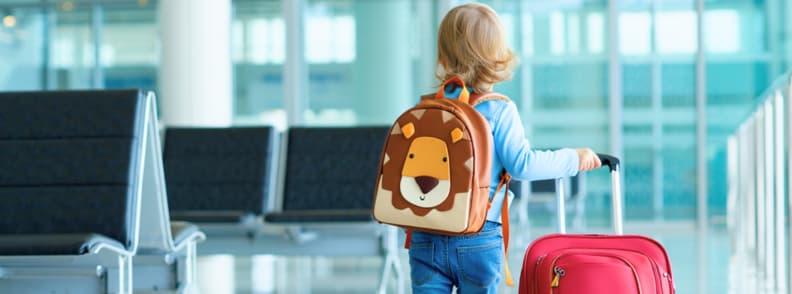
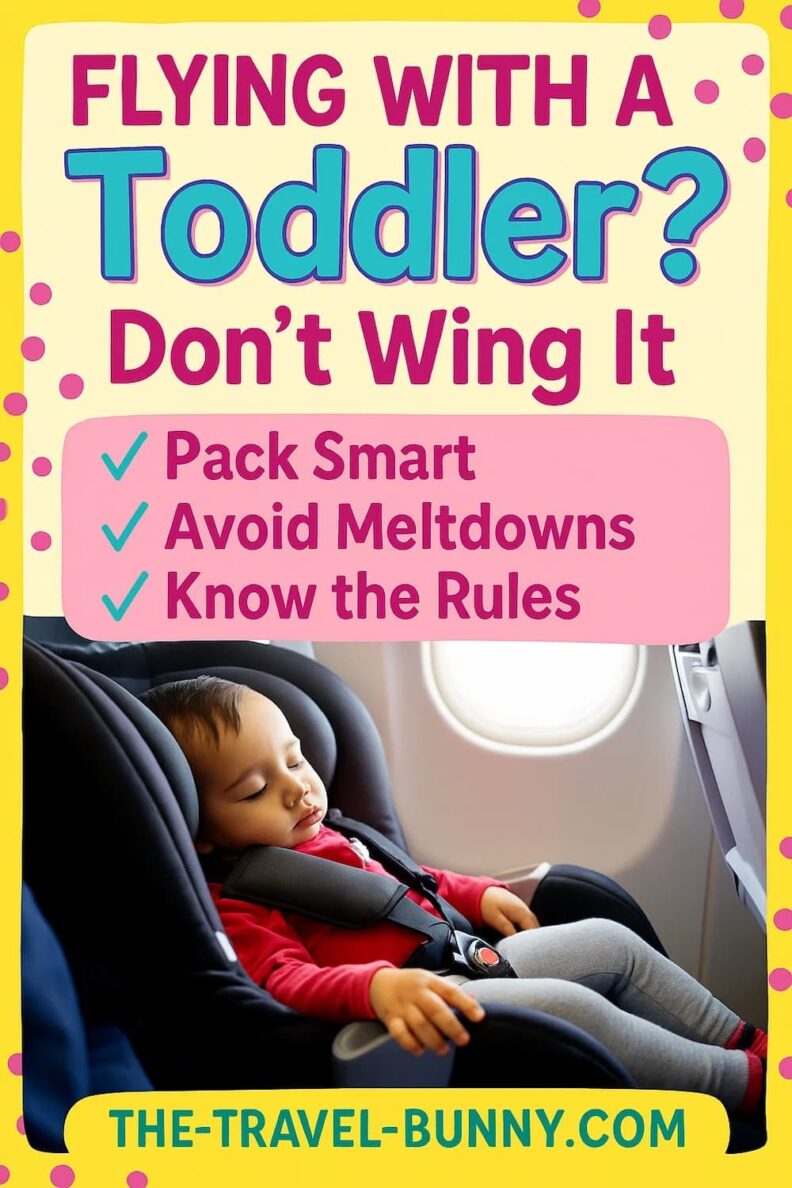
Great tips! Traveling with toddlers definitely needs extra planning, and your suggestions are spot-on. We’re planning a family trip to Portugal soon, so sorting out our Portugal visa ahead of time was a lifesaver—one less thing to worry about before flying with a little one! Thanks for the helpful post.
Hi David. Thanks so much! You’re absolutely right. Traveling with toddlers takes a different level of planning, and getting your Portugal visa sorted early is a smart move. It’s amazing how even one less task can make the whole flying with toddlers experience smoother. Wishing you a calm flight, well-timed naps, and no tantrums at security! If you need a toddler flight checklist or last-minute packing tips, feel free to check back, I’ve packed every trick I’ve tested into the guide. Safe travels!